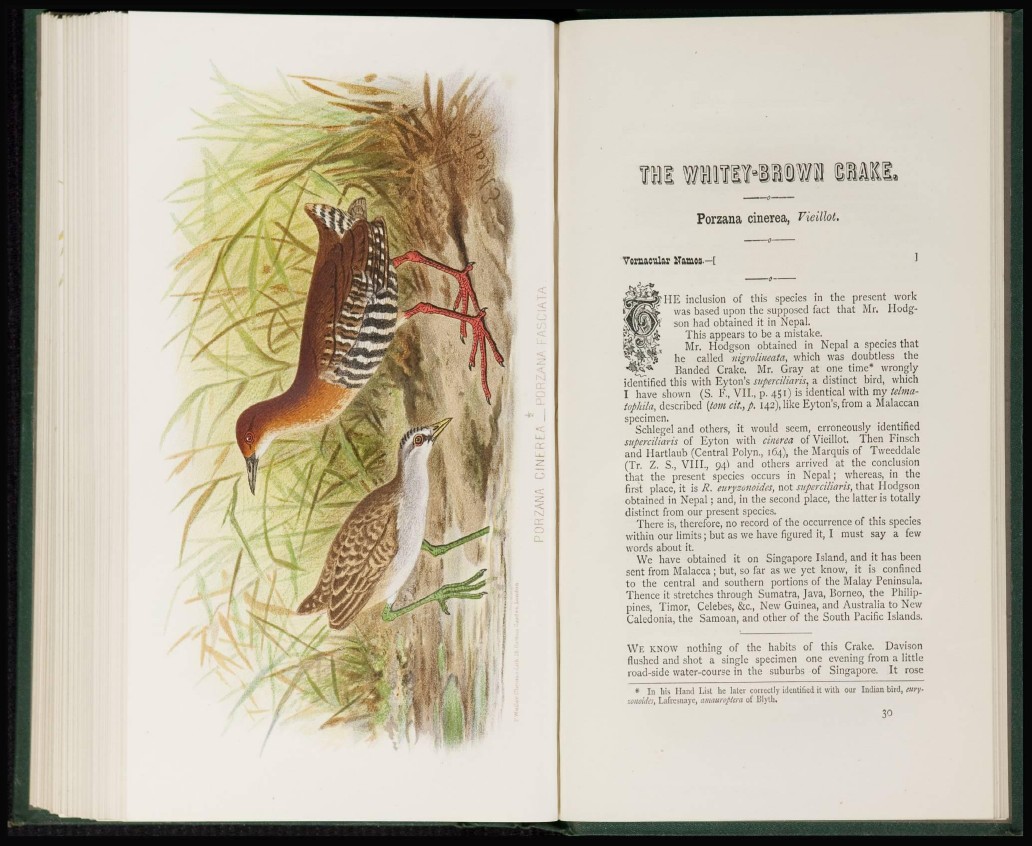
Porzana cinerea, Vieillot.
Vernacular Names—[ '
HE inclusion of this species in the present work
was based upon the supposed fact that Mr. Hodgson
had obtained it in Nepal.
This appears to be a mistake.
Mr. Hodgson obtained in Nepal a species that
he called nigrolineata, which was doubtless the
Banded Crake. Mr. Gray at one time* wrongly
identified this with Eyton's superciliaris, a distinct bird, which
I have shown (S. F., VII., p. 451) is identical with my tehnatophila,
described [torn cit., p. 142), like Eyton's, from a Malaccan
specimen.
Schlegel and others, it would seem, erroneously identified
superciliaris of Eyton with cinerea of Vieillot. Then Finsch
and Hartlaub (Central Polyn., 164), the Marquis of Tweeddale
(Tr. Z. S., VIII., 94) and others arrived at the conclusion
that the present species occurs in Nepal; whereas, in the
first place, it is R. euryzonoides, not superciliaris, that Hodgson
obtained in Nepal; and, in the second place, the latter is totally
distinct from our present species.
There is, therefore, no record of the occurrence of this species
within our limits; but as we have figured it, I must say a few
words about it.
We have obtained it on Singapore Island, and it has been
sent from Malacca ; but, so far as we yet know, it is confined
to the central and southern portions of the Malay Peninsula.
Thence it stretches through Sumatra, Java, Borneo, the Philippines,
Timor, Celebes, &c, New Guinea, and Australia to New
Caledonia, the Samoan, and other of the South Pacific Islands.
WE KNOW nothing of the habits of this Crake. Davison
flushed and shot a single specimen one evening from a little
road-side water-course in the suburbs of Singapore. It rose
* In his Hand List he later correctly identified it with our Indian bird, airytonoidei,
Lafresnaye, amauroptera of Blyln.